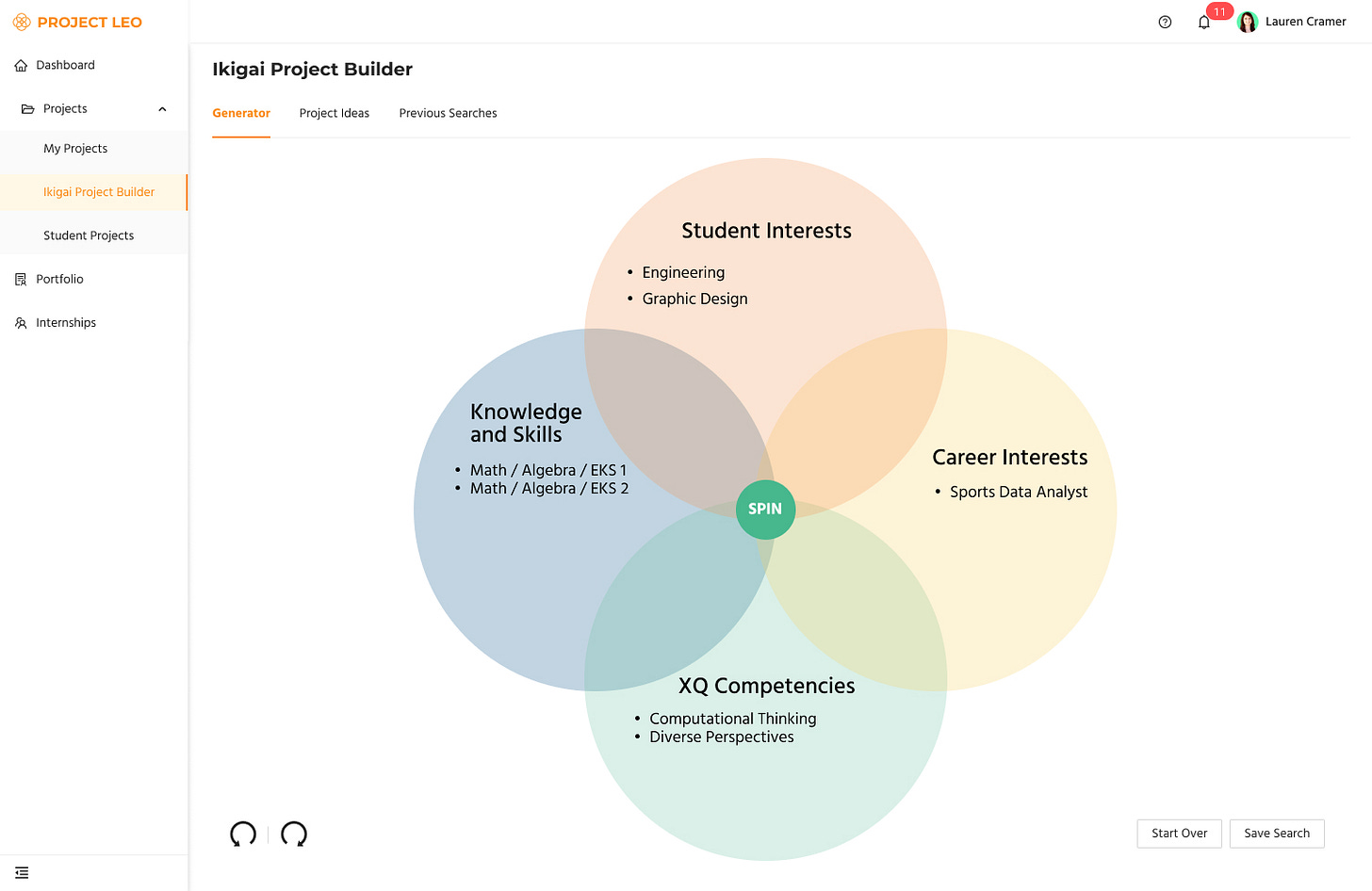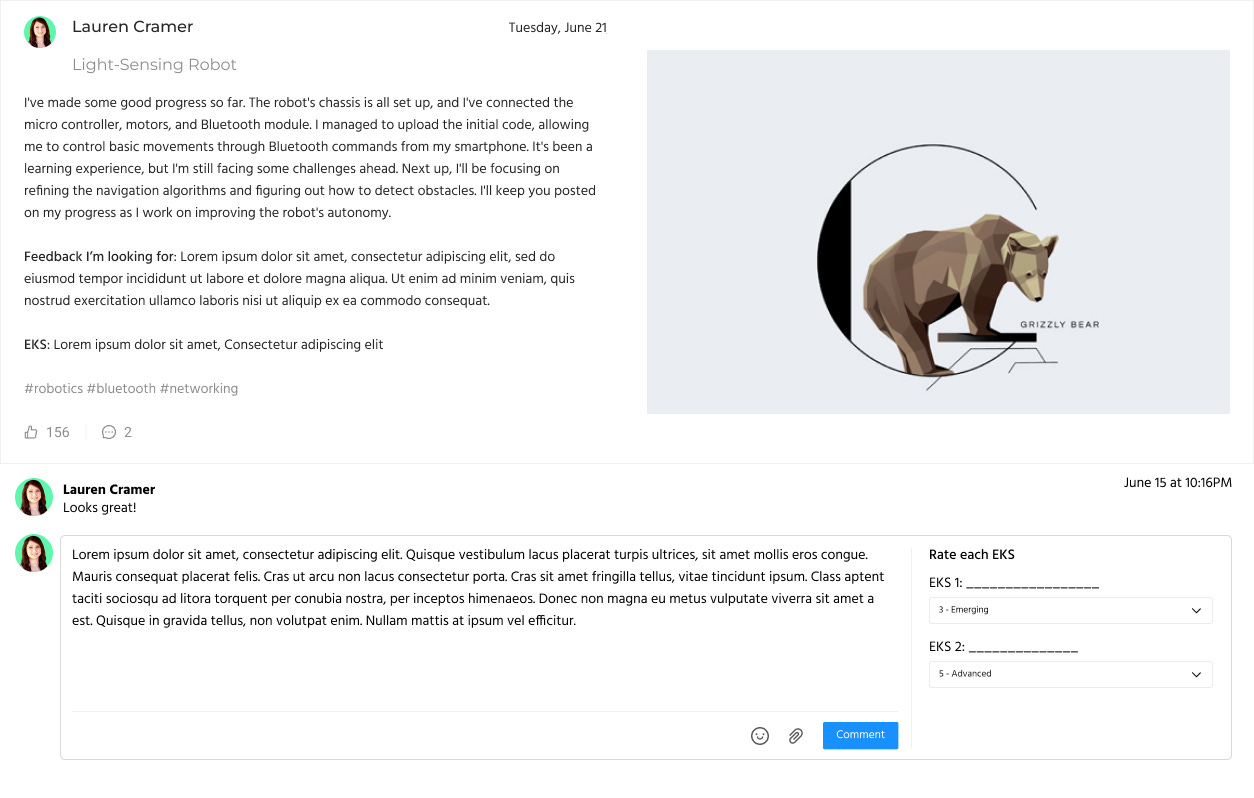The Pedagogy of Project Leo
Shifting from gatekeepers of knowledge to choreographers of learning
The Project Leo platform gives students the chance to build personalized projects, and teachers the support they need to develop the key skills students need to have a positive impact on their community. While Project Leo provides the tentpoles of the project (idea generation at launch, feedback through every development cycle, and a portfolio that demonstrates process and mastery along the way), it requires a new pedagogy to successfully implement in the classroom. This classroom style isn’t completely new or revolutionary, but an integration of research backed practices that amplify the Artificial Intelligence (AI) tooling that is behind Project Leo.
I am a teacher primarily because of the amazing impact my high school calculus teacher had on me. Kathy Clemmer had a knack for making dry math concepts come alive and excite just about every high school student taking her class. My love for math and its endless applications blossomed because I got to have her for three years in a row during high school. Kathy developed a framework to share her expertise and help teachers execute at a higher level that included five steps:
Hook
Investigation Before Explanation
Structured Lecture
Active Practice
Reflection
The most important part of any lesson was to Hook students in with an emotional connection to the material. Often it was an abstract connection through a pop-culture meme or popular movie clip, but this small move gave students meaning in their learning. While this was a critical part of every lesson, it has been difficult to scale Kathy’s expert artistry in getting students hooked to learn calculus, or any other subject for that matter.
Project Leo handles the Hook part of a lesson with ease. Through our Ikigai Project Builder, students are now able to generate Hooks that are individualized to their interests. Students will enter an interest and teachers will enter the skills that they are working to develop in the class. Students can also input a career they are curious about as well as focus on cross-cutting competencies that schools develop through their Portrait of a Graduate or adoption of frameworks like the XQ Competencies. It is extremely difficult for teachers to integrate multiple inputs into a meaningful personalized project for every student. When students click our Spin button, we make a call to ChatGPT with our optimized queries and return five project ideas that allow students to have a clear reason to learn the class material and build the skills that will help them in their project and beyond.
On the first day of class, and of every unit, I will have my students use the Ikigai Project Builder with two of the Essential Knowledge and Skills (EKS) from my class. It is critical to define the 8-10 EKS for every class. We have found the best way to do this is through an advisory board with professional partners that meets twice a year who constantly updates the EKSs based on industry needs. This is a norm for Career Technical Education (CTE) classes but would benefit every class. I will have 8 EKSs for all of my classes this year, which will allow me to run five 6-week projects. Here are my first two EKSs for my sophomore mechanical engineering course and the broad EKSs that I will use for my classes to connect with other subjects:
Sketching Parts - Create rough sketches that clearly communicate the geometric and physical features of parts.
Manual Tool Applications - Safely use analog machines to fabricate wood and metal parts within a specific tolerance.
English - Communicate ideas clearly and effectively.
Science - Finding ways to better understand the operating system of the universe.
History - History doesn’t repeat itself, but it rhymes. Applying relevant rhyming schemes to make better predictions.
Math - The systematic effort of solving problems posed by nature.
Languages - Seeing the world from a new perspective.
Art - Expanding possibilities through creative expression
Engineering - Doing with $1 what anyone can do with $2.
Once students have a personalized project that gives them a reason to learn the EKSs that I am teaching in class, we will embark on a 6-week journey together. Schools that have a block schedule have classes that are 100 minutes long. This means that I have ten 10-minute blocks to spend with my students each class period. I plan on holding three targeted 10-minute workshops to build the EKSs of my students based on their current skill level each class period.
An example of this for my Sketching Parts EKS would be to hold workshops on construction lines for beginners, perspective sketching for intermediate students, and light/shading for advanced students. Students will be able to opt-in to the workshops they feel they need. Occasionally I will nudge students into a specific workshop based on what I am observing in their work, but I want students to own as much of the learning process as possible. I hope to record as many of these sessions as possible so that students can consume them asynchronously when they need them. As I build up a library of workshops, I can focus more of my time in class working directly with my students on their projects.
The remaining seven 10-minute blocks will be spent helping students with the practice they need to develop their skills, or to help them work through a challenge in their project. As I have coached more and more student projects, I have found the most frustration happens when students are stuck for an extended period of time. Students often don’t know what questions to ask or what resources to leverage. My curiosity and strict consumption of high quality daily and weekly emails, blog posts, and podcasts gives me access to a wide range of resources that are either current and up to date or timeless.
Having a multitude of pivot options and ideas to explore for my students is the most important skill to being a choreographer of learning.
We plan on creating a feature within Project Leo that helps with this in the future, but for now it is key that teachers build their curiosity and ability to coach students through challenges. I have found the most effective way to coach students is by making as many analogous comparisons to their projects as possible. Usually there is another project similar or analogous to the one in my class, so there are lots of lessons to learn simply by pointing them out to my students.
Once students feel confident to move forward with their project, I will push them to create a full version of their project as soon as possible. At a minimum, students will need to submit a full version of their project every 2-weeks, or three times during the 6-week project. The current school system has conditioned students to do whatever they can to get an A. This often means that they do whatever they can to get their one submission as high quality as possible. Unfortunately, that usually means the learning opportunities are limited. Students like to “do research” instead of building an actual solution. It is scary to submit a first version of their project for feedback, but this is the best practice in just about every industry. My students will submit a full version of their solution every 2-weeks for feedback no matter what. This will allow me and the rest of the community to give them feedback on their work to help them improve their skills much faster than if they only submitted for a grade once.
The area of assessment and feedback is where I feel Project Leo will have the biggest impact on my students’ mindsets. Students learn about what they are emotionally focused on. Project Leo will obfuscate grades from the view of students, and instead put the focus on building their project and corresponding EKS. Every project update post will be assessed by the teacher and the community through a simple interface.
On the back end we will be able to calculate student growth with clear evidence in a way that hasn’t been possible before Project Leo. Teachers will no longer have to set up workarounds or play games with student grades. Instead, the grade will be populated through student work automatically. Since it is outside the view of the students, they finally get to focus on the actual learning and building instead of the grade.
There are still many details that we are working through and developing, but I wanted to share where we are today. If you want to join Project Leo, please go to our website and click on the I’m Interested Button to join our waitlist.



